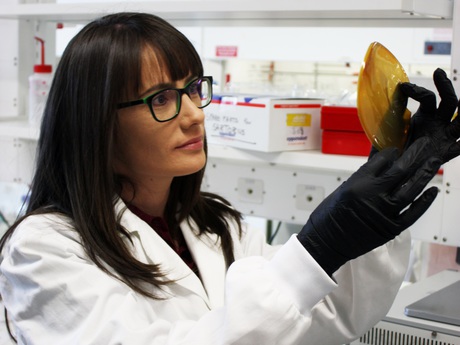Cactus inspires fuel cell efficiency

The water-retention strategies of the cactus have inspired a team of scientists to make more efficient fuel cells for electric cars. Their breakthrough may have other useful applications in gas separation and water treatment.
The stomatal pores of the cactus remain closed when the sun is up but open at night when temperatures drop and humidity increases. This strategy has been applied by scientists from CSIRO and Korea’s Hanyang University on a new type of membrane that can boost the efficiency of fuel cells used in electric vehicles.
Study co-author Dr Aaron Thornton of CSIRO explained that proton exchange membrane fuel cells (PEMFC) mix simple gases like hydrogen and oxygen together to generate energy. PEMFCs require constant hydration to maintain performance. Traditionally this has required a humidifier, radiator and water reservoir in close proximity, which adds bulk and weight to a vehicle as well as consuming significant power.
The team has now developed a membrane with a water-repellent skin that acts in a similar fashion to the stomatal pores of the cactus, resulting in a significant efficiency boost for fuel cells. With this new development, an electrochemical reaction generates moisture that is regulated through nanocracks in the water-repellent skin, which close when moisture is scarce and widen as humidity increases.
“This means that fuel cells can remain hydrated without the need for bulky external humidifier equipment. We also found that the skin made the fuel cells up to four times as efficient in hot and dry conditions,” said Dr Cara Doherty, co-author and CSIRO researcher.
The research has been led by Professor Young Moo Lee of Hanyang University, who believes it has the potential to increase the popularity of electric cars.
“At the moment, one of the main barriers to the uptake of fuel cell electric vehicles is water management and heat management in fuel cell systems,” said Professor Lee. “This research addresses this hurdle, bringing us a step closer to fuel cell electric vehicles being more widely available.”
Over the last 10 years, Professor Lee’s team at Hanyang University has conceived and designed the experiments used in the research while the CSIRO scientists used their characterisation and modelling expertise to determine how the membranes would behave as humidity levels changed.
Professor Lee believes this research has potential in other fields as well, stating: “This technique could also be applied to other existing technologies that require hydrated membranes, including devices for water treatment and gas separation.”
This research was published in the journal Nature.
European Space Agency inaugurates deep space antenna in WA
The ESA has expanded its capability to communicate with scientific, exploration and space safety...
Black hole collision supports Hawking's landmark theory
Astrophysicists have witnessed a collision between two black holes that was so loud, they were...
Uncovering differences in wild and domesticated crops
Researchers have revealed insights into the genetic make-up of wild varieties of common crops...







